JavaScript implements the first, middle and last order traversal of binary tree (recursive and non recursive)
1, A green binary tree
1,binary-tree.js
const binaryTree = {
val: 'a',
left: {
val: 'b',
left: {
val: 'd',
left: null,
right: null
},
right: {
val: 'e',
left: null,
right: null
}
},
right: {
val: 'c',
left: {
val: 'f',
left: null,
right: null
},
right: {
val: 'g',
left: null,
right: null
}
}
}
module.exports = {
binaryTree
}
2. Draw it
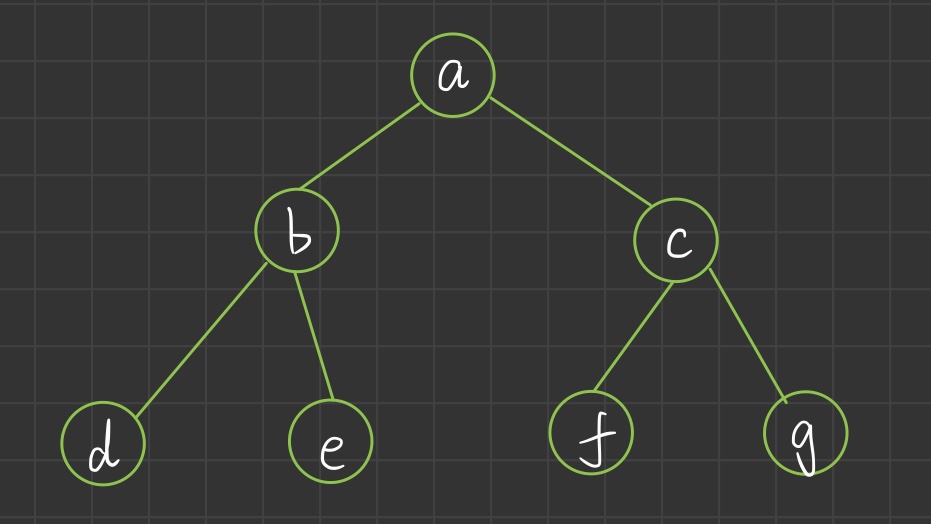
2, Recursive implementation of binary tree pre middle post order arrangement
Recursive implementation is very simple and can be completed quickly. In this era of inner volume, rounding means that everyone can write with his hands and know what he is doing
Basically, the preamble is to print at the beginning, recurse the left child, and then recurse the right child;
The middle order is to recurse the left child, print the node value, and recurse the right child;
The following sequence is recursive left child, recursive right child, and then print the node value
1. Preorder traversal
const { binaryTree } = require('./binary-tree')
const pre_order = root => {
// If the node is empty, return directly
if (!root) return;
console.log(root.val)
pre_order(root.left)
pre_order(root.right)
}
pre_order(binaryTree)
// a b d e c f g
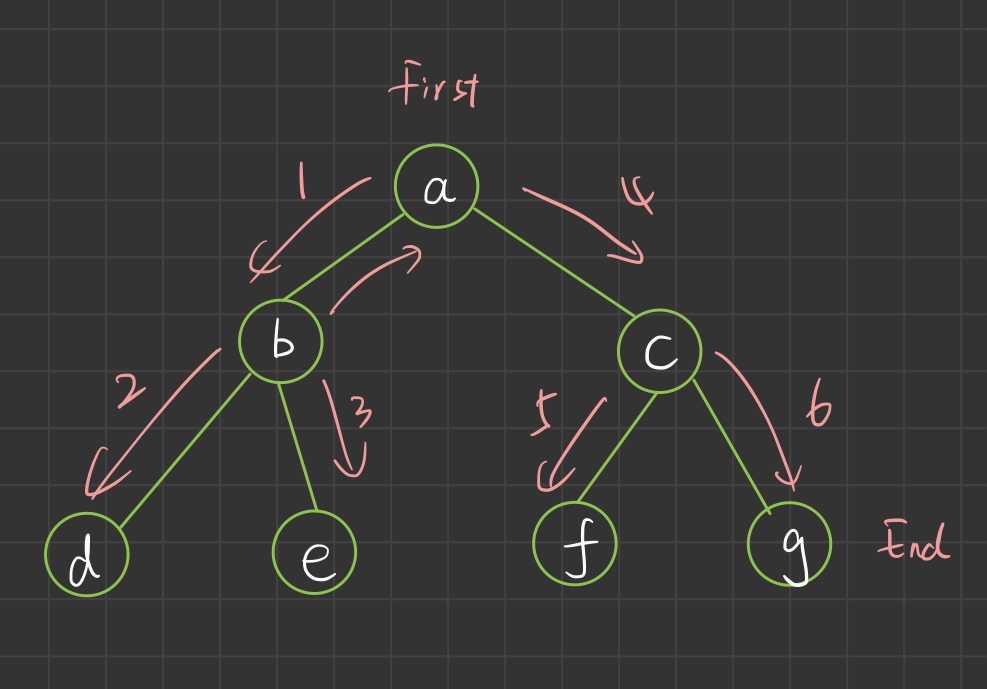
2. Medium order traversal
ctrl(command) + shift + L pre_ Change order to in_order, and then adjust the printing order
const { binaryTree } = require('./binary-tree')
const in_order = root => {
// If the node is empty, return directly
if (!root) return;
in_order(root.left)
console.log(root.val)
in_order(root.right)
}
in_order(binaryTree)
// d b e a f c g
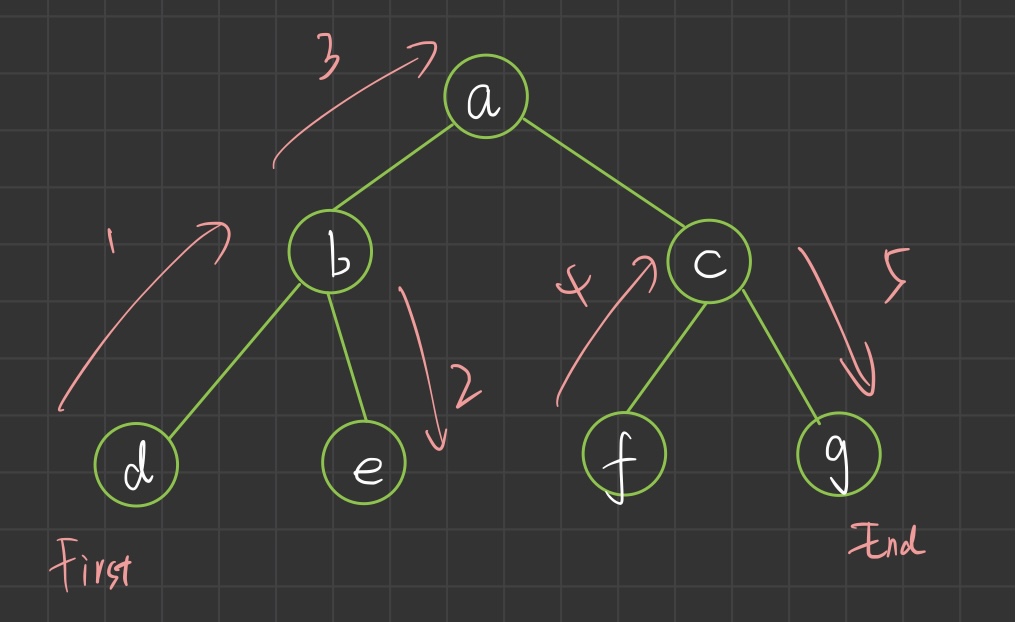
3. Postorder traversal
const { binaryTree } = require('./binary-tree')
const post_order = root => {
// If the node is empty, return directly
if (!root) return;
post_order(root.left)
post_order(root.right)
console.log(root.val)
}
post_order(binaryTree)
// d e b f g c a
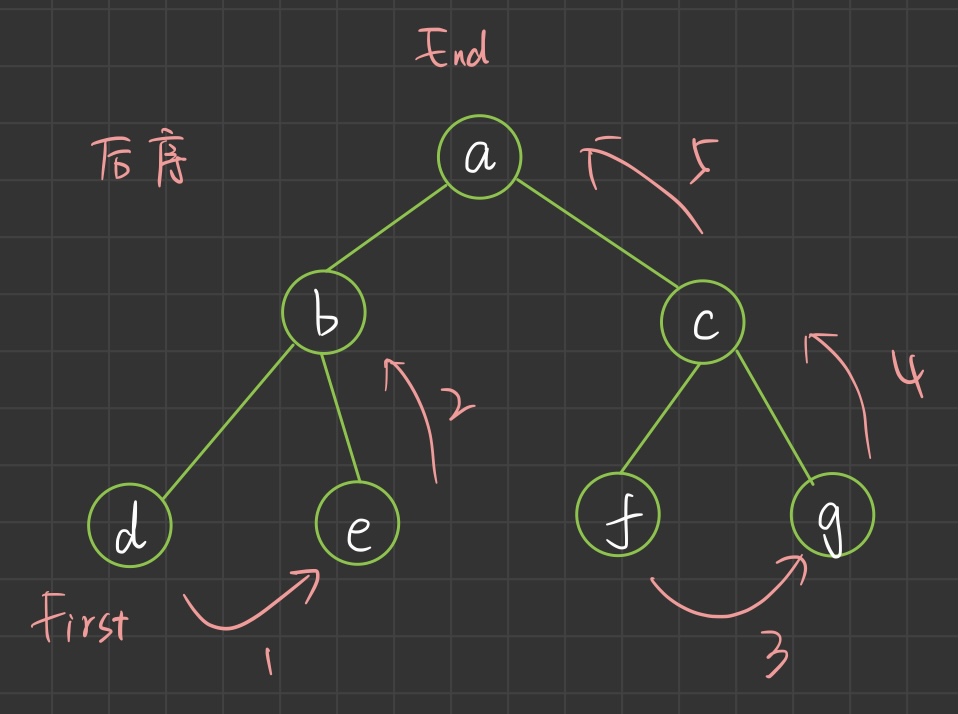
You can see with the naked eye that the implementation of recursive coding is only the order of recursion and printing. What you need to master is what the three sequential traversals mean and how they are traversed
3, Non recursive traversal of binary tree
It's a little difficult to lose~
The front, middle and back are implemented by stack
1. Non recursive preorder traversal
Look at the picture drawn earlier

const { binaryTree } = require('./binary-tree')
const nonrec_preorder = root => {
// If the node is empty, return directly
if (!root) return;
const stack = [root];
while(stack.length) {
const node = stack.pop();
if(node.right) stack.push(node.right);
if(node.left) stack.push(node.left);
console.log(node.val)
}
}
nonrec_preorder(binaryTree)
Why push the right node first and then the left node? Because the stack is first in and last out,
In the previous recursive implementation, we already know that the result is a b d e c f g
The left node can be printed first, so the child can press the left node first, and then the child can press the right node first
The following will write post order traversal, which is the reverse of this, which can be combined
2. Order traversal in non recursive implementation
As can be seen from the recursive algorithm and diagram above, the middle order traversal will first find the leftmost child node
This can be achieved with the help of a pointer and stack
const { binaryTree } = require('./binary-tree')
const nonrec_inorder = root => {
// If the node is empty, return directly
if (!root) return;
// Define a pointer to root
let p = root;
// Define a stack
const stack = [];
// This place needs to be 𞓜 p because if it is not added, it will not run in at the beginning
while(stack.length || p) {
// As long as p is not empty, keep looking for the left node and press the stack
while(p) {
stack.push(p)
p = p.left;
}
// At this time in the first round, the leftmost node has been found. pop it out
const node = stack.pop();
console.log(node.val)
// At this time, both the left node and the root node have pop out, and you need to traverse the right node
p = node.right;
}
}
nonrec_inorder(binaryTree)

3. Non recursive post order traversal

Through the careful observation of grandma
The result of postorder traversal is d e b f g c a, right
If you turn over the preorder traversal at the beginning, first "preorder traversal" from the right
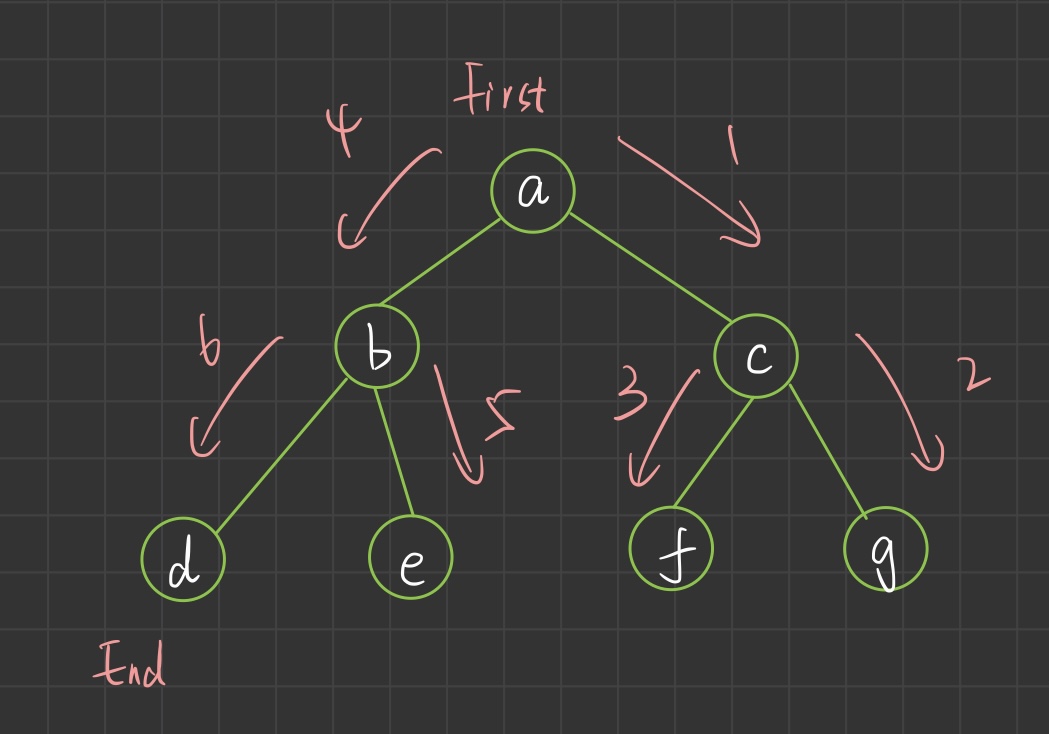 This is a c g f b e d
This is a c g f b e d
If you read this in reverse, it's the result of post order traversal!
So according to this idea
Just turn it over and realize the "pre order traversal" from the right, and then put the result in a stack. The correct result will be output first in and then out!
const { binaryTree } = require('./binary-tree')
const nonrec_postorder = root => {
// If the node is empty, return directly
if (!root) return;
// This is the same as the stack traversed by the previous sequence
const stack = [root];
// This is used to reverse the final result
const out_stack = [];
while(stack.length) {
const node = stack.pop();
// Collect the results of this pop every time and put them in the stack where the results are output
out_stack.push(node);
if(node.left) stack.push(node.left);
if(node.right) stack.push(node.right);
}
// Just pop print the output stack again
while(out_stack.length) {
const n = out_stack.pop();
console.log(n.val)
}
}
nonrec_postorder(binaryTree)
All right ~ the end of the flower spreading ✿✿ヽ (° ▽ °) ノ✿ although the picture is ugly, it is painted with heart
If you like it casually, there will be one more happy, lovely and sharing woman Cheng Xuyuan on the planet~